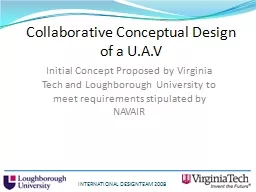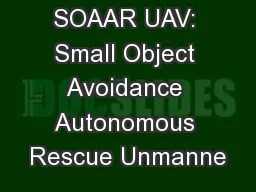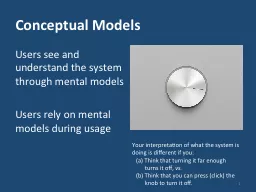PPT-Collaborative Conceptual Design of a U.A.V
Author : pasty-toler | Published Date : 2016-06-10
Initial Concept Proposed by Virginia Tech and Loughborough University to meet requirements stipulated by NAVAIR Background Annual collaboration project Virginia
Presentation Embed Code
Download Presentation
Download Presentation The PPT/PDF document "Collaborative Conceptual Design of a U.A..." is the property of its rightful owner. Permission is granted to download and print the materials on this website for personal, non-commercial use only, and to display it on your personal computer provided you do not modify the materials and that you retain all copyright notices contained in the materials. By downloading content from our website, you accept the terms of this agreement.
Collaborative Conceptual Design of a U.A.V: Transcript
Download Rules Of Document
"Collaborative Conceptual Design of a U.A.V"The content belongs to its owner. You may download and print it for personal use, without modification, and keep all copyright notices. By downloading, you agree to these terms.
Related Documents












